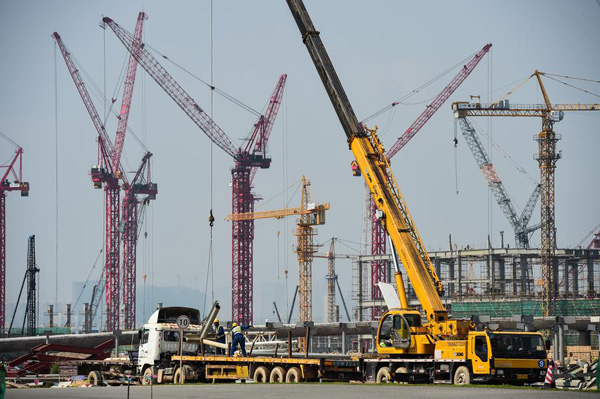Mini nuclear reactor now ready to be built
The first pilot project to use China National Nuclear Corporation’s (CNNC) cutting-edge third-generation ACP100 nuclear reactor has completed its preliminary design stage and is qualified for construction in Hainan Province.
|
|
|
Visitors watch the models of ACP 100 nuclear reactor at an expo in Beijing, April 29, 2017. [Photo/China Daily] |
The company said that the ACP100, China’s first small reactor developed by CNNC for practical use, which the company calls the Linglong One, is expected to be built at the end of this year in the Changjiang Li Autonomous County of Hainan.
All research, development and design procedures have been completed, and work will proceed on the feasibility study, soil and water conservation research, environmental impact assessment, construction land geological disaster risk assessment and seismic safety assessment following the issuing of the relevant permits by the end of next month.
Qian Tianlin, general manager of China Nuclear New Energy Investment, said earlier that small-scale nuclear reactor technology has reached a stage at which it can be used on a pilot basis.
It can be used to generate heat for a residential district replacing coal-fired boilers, he said.
According to Qian, small modular reactors are defined by the International Atomic Energy Agency as advanced reactors producing up to 300 megawatts of power that can largely be built in factories and shipped to utilities and end users.
They were widely promoted in the 1990s, thanks to their enhanced level of security and flexible use, including providing heat and sea desalination, he said.
China is highly supportive of small modular reactors, and the company’s Linglong One is the first reactor of its kind in the world to have passed the safety review by the IAEA, a remarkable breakthrough in global small multipurpose modular reactor development.
Qian said he expects mass production of the small modular reactors after the pilot project in Hainan is up and running, and for the technology to be exported globally.
Many countries, including Pakistan, Iran, the United Kingdom, Saudi Arabia, Indonesia, Mongolia, Brazil, Egypt and Canada, have shown a keen interest in potential use of the technology, it said.
Wan Gang, head of the China Institute of Atomic Energy, said small modular reactors are safe amid growing public concern over nuclear safety following the 2011 Fukushima nuclear disaster in Japan.
According to CNNC, compared with million-kilowatt reactor nuclear power plants, the Linglong One features low and controllable core temperatures and is economically superior to other power supply modes and is more environmentally friendly.

